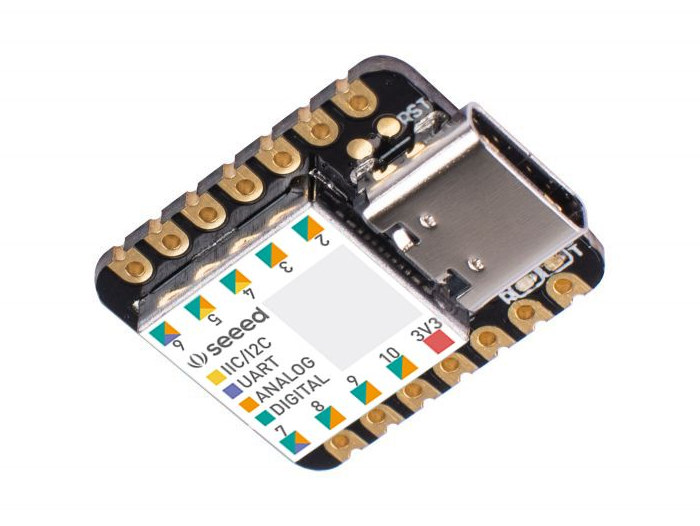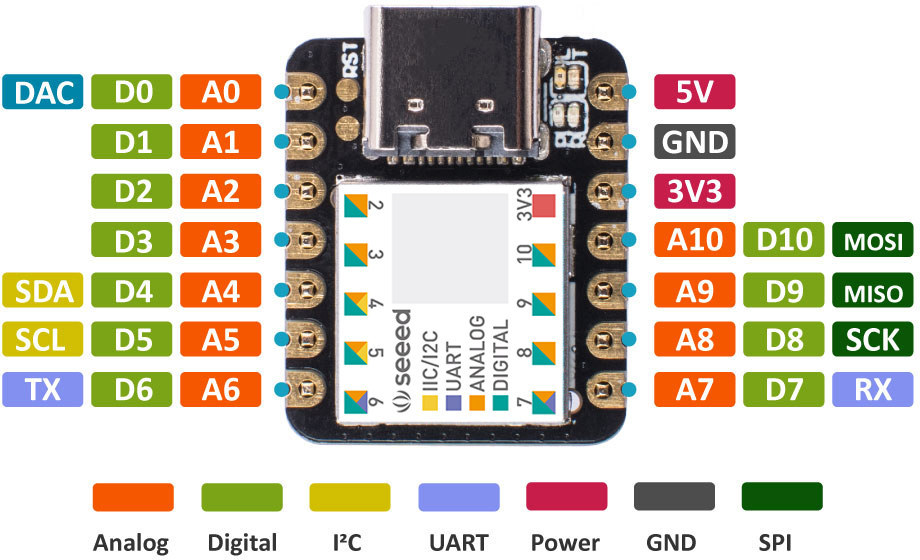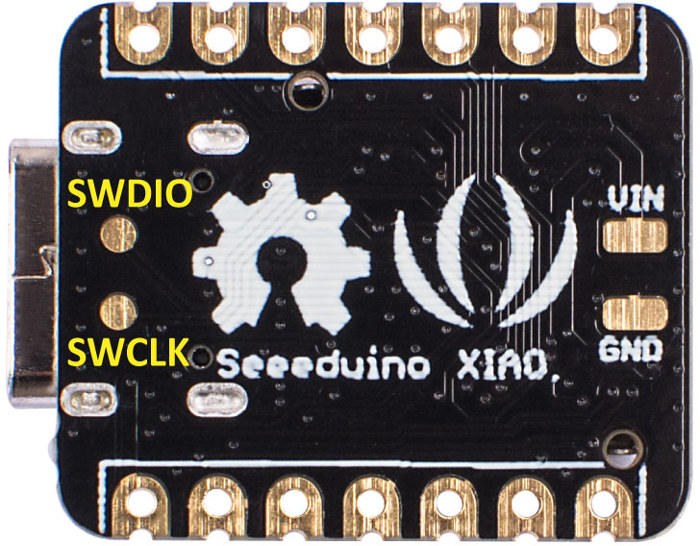
Seeduino XIAO specifications:
- MCU – Microchip SAMD21G18 ARM Cortex-M0+ microcontroller at up to 48MHz with 256KB Flash,32KB SRAM
- USB – 1x USB type C port for power and programming
- Expansion I/Os
- 2x 7-pin headers with 11x analog inputs, 11x digital I/Os, 1x DAC, SPI, UART, and I2C
- 3.3V I/O voltage (not 5V tolerant)
- Misc – 1x user LED, power LED, 2x LEDs for serial port downloading, Reset pads, SWD pads, 32.768KHz crystal oscillator
- Power Supply – 5V via USB-C power, power pads (VIN/GND) for battery
- Dimensions – 23.5×17.5×3.5 mm
All main components are placed under a shield, but there may be some charger chip (nope: see comments) as the company explains the board supports batteries via the VIM/GND pins which makes it suitable for wearable devices.
Seeeduino XIAO is compatible with Arduino Zero board, and you can program it in the Arduino IDE or Arduino Create. You’ll find resources to get started on Github.
The board sells for $4.90, and ships with two headers, and four different stickers to place on top of the metal shield.

Jean-Luc started CNX Software in 2010 as a part-time endeavor, before quitting his job as a software engineering manager, and starting to write daily news, and reviews full time later in 2011.
Support CNX Software! Donate via cryptocurrencies, become a Patron on Patreon, or purchase goods on Amazon or Aliexpress






